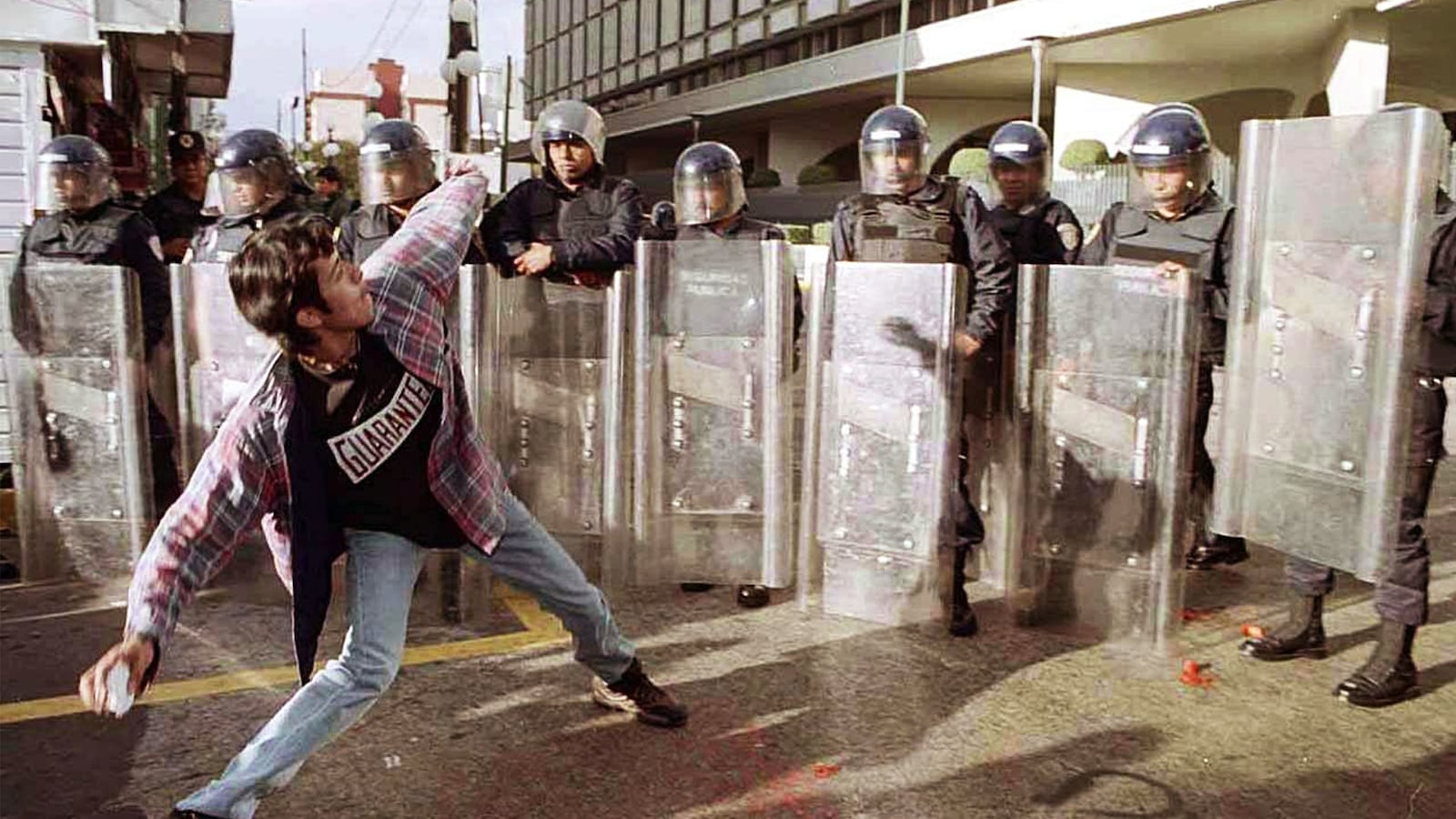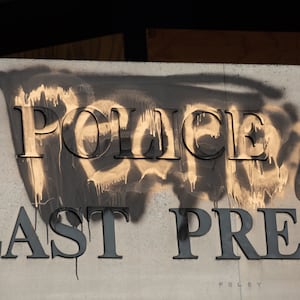Even as new protests in Seattle have Donald Trump engaging in his usual bluster, Norm Stamper, the former police chief in that city, has watched the recent images and videos of cops cracking down on nonviolent protesters with tear gas, batons, and pepper spray across the country with the same feelings of sadness and wrongness that have gripped so many Americans. But Stamper had an extra layer of frustration: “We must be suffering from some kind of learning disability,” he told me from his home on Orcas Island, Washington. “We really are incapable of learning from our experience.”
Stamper ran the Seattle Police Department during the 1999 protests against the World Trade Organization, the most infamous event in Seattle policing history. On what was supposed to be the first day of WTO meetings, exceptionally well-organized left-wing activists out-maneuvered the cops, blockading downtown Seattle intersections, freeway exits, and sidewalks, sometimes dancing in joyous defiance.
Overwhelmed, outnumbered, and worried that emergency vehicles couldn’t navigate the streets, the SPD deployed tear gas, pepper spray, bean bag rounds, and other non-lethal but aggressive means to clear the streets. Cops—some of them with their badge numbers obscured—pushed demonstrators into the nearby Capitol Hill neighborhood, where indiscriminate use of tear gas terrorized residents who had nothing to do with the protests. In the following days the SPD successfully kept protesters away from the WTO meetings, but violent clashes between cops and activists continued, and the images of riot gear, Molotov cocktails, broken windows, and brutalized citizens were widely seen as a fiasco for Seattle’s leadership.
A report on the protests by the Seattle City Council condemned “seemingly gratuitous assaults on citizens… by officers who seemed motivated more by anger or fear than professional law enforcement.” Stamper himself resigned immediately after the fiasco, and later became an outspoken police reform advocate; he’s repeatedly called the decision to use tear gas against nonviolent protests the worst mistake of his career. “Foremost among the lessons that I learned was you don't tear-gas nonviolent, and indeed non-threatening, protesters,” he told me.
As the police response to the protests over the killing of George Floyd shows, however, many police departments have learned exactly the wrong lessons from the “Battle in Seattle.” In places like Los Angeles, Washington, DC, and Seattle itself, cops have deployed chemical agents against largely peaceful protesters.
Scholars who study the policing of protests have concluded that these kinds of tactics often increase the potential for chaos and violence, and there’s been ample anecdotal evidence in the past two weeks that if cops crack down hard, some protesters will fight back, leading to an escalating cycle of violence. It should be obvious to law enforcement officials that this doesn’t work—but clearly, they have a perverse definition of what “works.”

Anti-WTO protesters run from exploding tear gas grenades in Seattle in 1999.
Kim Stallknecht/AFP via GettyLaw enforcement accounts of the Battle in Seattle defend rather than condemn the use of tear gas to break up the protests. “The methods used by SPD to restore order were fully consistent with the police rules regarding the use of force,” asserted the department’s after-action report, which emphasized the need for more pre-event planning. “You must contain protestors to one specific area,” was one lesson a former King County official emphasized in a 2009 retrospective that praised “massive displays of force to take control of the streets.”
In the years following the WTO action, police departments expecting protests and unrest in their cities often turned to the SPD for advice, which no doubt boosted the proliferation of Seattle-style tactics in the early 2000s. At the 2000 Republican National Convention in Philadelphia, law enforcement went so far as to infiltrate protest groups with undercover officers.
It became routine to set up notoriously limited “free speech zones” where demonstrators could congregate, establish barriers preventing any access to the event activists were protesting, and use nonlethal weaponry and mass arrests whenever a situation even looked like it was getting out of hand—all features of the police response in Seattle. The apex of this type of policing arguably occurred in Ferguson, Missouri, during the 2014 Michael Brown protests, when police in military-style gear targeted protesters and activists alike.
Brutal crackdowns on demonstrations were common before the 1970s, but in what’s called the “negotiated management” era of the following decades, protest groups often worked out routes and timetables with police beforehand, and many large demonstrations unfolded without violence. “Seattle was where this resurgence occurred, where police started to return to the use of force,” said Pat Gillham, a sociologist at Western Washington University who has extensively studied the WTO action and the policing of protests. “They were no longer negotiating with protesters to plan what they were going to do for the protests and how they were going to be policed.”
Part of this change can be attributed to a change in tactics on the protesters’ part. In Seattle, left-wing disrupters refused to share plans with cops before the event, and in the years since many activists have similarly eschewed pre-protest negotiations and permits.
Stamper told me that cops facing WTO-style protests should still work to identify protest leaders and “have a conversation about how do we keep this demonstration nonviolent, how do we reduce the chances that chemical agents are going to be brought out at all, reduce the chances that that there will be mass arrests.”
The former SPD chief was cautiously optimistic about how Seattle authorities were handling the “Capitol Hill Autonomous Zone,” an Occupy-style six-block enclave set up by leftist protesters who drove cops out of a precinct house. Donald Trump has hyperbolically demanded Democratic officials to “Take back your city NOW,” but police brass has spoken about the need for “dialogue” with activists and haven’t cracked down on the “CHAZ,” a strategy Stamper praised. "There are a lot of people, many in uniform, who think this is a huge mistake,” he told me. “Time will tell. But for now maybe it paves the way for reimagining public safety.”
Some departments elsewhere have handled the protests well. In Camden, New Jersey, where a police department that was rebuilt from the ground up several years ago has emphasized de-escalation and working with the community, officers joined a march last week and protests have stayed peaceful. That’s the payoff from years of work building trust between cops and citizens.
Many big city police departments can’t count on that kind of trust. Instead, they often seem to regard protests with a mixture of contempt and fear. A Philadelphia police officer interviewed by John Noakes, Gillham’s frequent coauthor, said the WTO protests were “parallel to Pearl Harbor to some degree.” Just as those activists spooked the SPD, similar actions have scared other police departments, which must attempt to manage amorphous protests with no centralized leadership that are often particularly pissed off at the cops themselves.
When cops are scared, they often default to overwhelming force. That was on display in Seattle, and it’s been on display for the last several days too, as police have unleashed the WTO playbook in city after city. Just as in 1999, it shocked anyone watching. And, just as in 1999, the cops will defend their use of force as necessary to keep things orderly. Maybe they’ll learn a different lesson this time. We can only hope.


